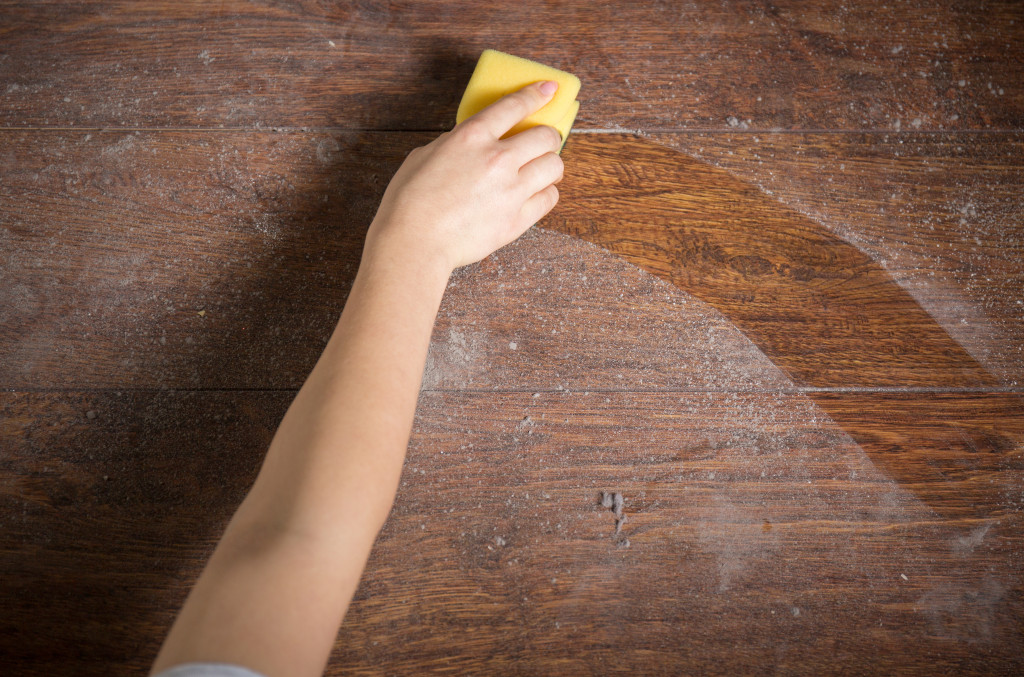- Dust is a mixture of various materials and can be found both indoors and outdoors.
- Excessive dust accumulation can cause allergies, respiratory issues, poor indoor air quality, fire hazards, and pest infestations.
- Regularly change HVAC filters and dust surfaces using a damp cloth to reduce dust buildup.
- Declutter your home and choose low-dust materials to control dust levels in the house further.
- Cleaning with non-toxic products will help reduce exposure to harmful chemicals in the dust.
A clean and tidy home is essential not just for aesthetic reasons but also for the health and well-being of your family. While most parents take care to clean their homes regularly, many often underestimate the harm that can be caused by accumulated dust. A dusty home can be more dangerous than you think. Dust can cause allergies, respiratory issues, and even severe health problems. Here’s what you need to know about dust and how it can affect your family life.
What is Dust?
Dust refers to tiny, dry particles that accumulate in the air or settle on surfaces. It is a mixture of various materials such as soil, pollen, skin cells, fabric fibers, pet dander, insect debris, and other particulate matter. Dust can be found indoors and outdoors, and its composition may vary depending on the environment.
The sources of dust can be diverse. Outdoor dust often originates from soil erosion, volcanic ash, plant pollen, or industrial pollutants. Indoor dust is typically a combination of outdoor dust that enters the building through open doors or windows and particles generated within the indoor environment. Indoor sources include human skin cells, pet hair, dander, fibers from textiles and carpets, cooking residue, tobacco smoke, and other activities that involve movement or the disturbance of materials.
Dust particles can vary in size, ranging from visible specks to microscopic particles. Larger particles tend to settle faster, while smaller particles can remain suspended in the air for extended periods, contributing to airborne dust.
Excessive dust accumulation can lead to several issues. Here are some of those issues:

Allergies and Asthma
Dust is a significant cause of allergies and asthma. When you inhale dust, it triggers an immune response, leading to sneezing, runny nose, itchy eyes, and coughing. If you or anyone in your family has allergies or asthma, minimizing dust in your home is essential. Use a vacuum cleaner with a HEPA filter, which can trap even the tiniest dust particles. Dust surfaces regularly with a damp cloth and washes bed linens and curtains often to reduce allergens.
Poor Indoor Air Quality
Indoor air quality is a major concern, especially when families keep their homes sealed in winter. Dust can contribute to poor indoor air quality, leading to headaches, fatigue, and respiratory problems. If you have a central air conditioning or heating system, change the filters regularly to keep the air clean. You can also use air purifiers and open the windows to let fresh air in.
Fire Hazard
Dust buildup in your home can also be a fire hazard, mainly if it accumulates near electrical outlets or appliances. Dry dust is highly flammable and can catch fire quickly. To reduce the fire risk, dust regularly and keep electronics clean and dust-free.
Pest Infestations
Pests and insects thrive in dusty environments. Dust can provide food and shelter for pests such as dust mites, which can cause allergies and skin irritation. It can also attract rodents and cockroaches, which can spread disease. To prevent pest infestations, promptly clean up spills and crumbs and seal food tightly. Vacuum and dust regularly to discourage pests from residing in your home.
Chemical Exposure
Dust isn’t just made up of dirt and skin cells – it can also contain harmful chemicals such as lead, pesticides, and flame retardants. These chemicals can accumulate in your home over time and pose a health risk, especially to children and pets. To reduce exposure to harmful chemicals, clean with non-toxic products and choose furniture and materials free of hazardous chemicals.
How to Get Rid and Prevent Dust Buildup
If you don’t want to invest in high-end cleaning products and equipment, some simple steps can help reduce dust in your home. Here are some of those steps:
Start With Your HVAC
The most vulnerable area for dust buildup is your HVAC system. Regularly change the air filters, vacuum vents, and ducts, and have an HVAC professional inspect the system at least once a year. This will help reduce dust accumulation and improve indoor air quality. However, if you have no expertise, consider hiring a professional to help you. A local HVAC duct cleaning and sealing service can do all the above. They can also offer preventive maintenance services.

Dust Regularly
Remove dust from your home at least once a week. To remove dirt and debris, dust surfaces using a damp cloth, vacuum carpets, and upholstery. Also, regularly wash bed linens, curtains, and other fabrics to reduce dust buildup.
Declutter Your Home
Cluttered surfaces are prime spots for dust accumulation. Decluttering your home can help reduce dust levels – eliminate items you don’t need or use so you won’t have to clean them as often.
Choose Low-Dust Materials
When furnishing your home, choose low-dust materials like leather or vinyl instead of fabric furniture and carpets. These materials tend to collect less dust than softer materials such as fabric. Also, use dust-free cleaning products or make your own using natural ingredients that won’t leave any residue.
Dust can have severe consequences for the health and well-being of your family if not controlled properly. These simple steps can help reduce dust buildup in your home and keep your family safe from its harmful effects. It can also improve the air quality in your home, giving you a healthier and more comfortable living environment.

